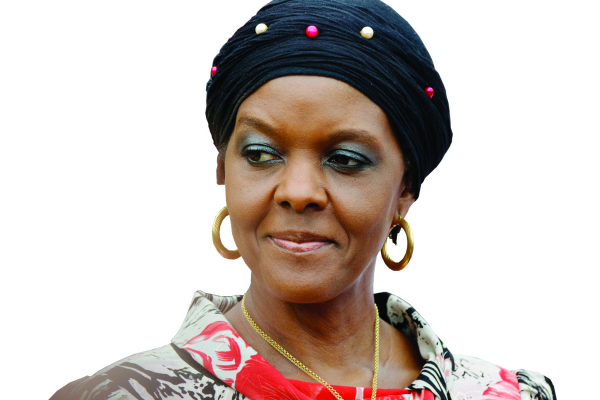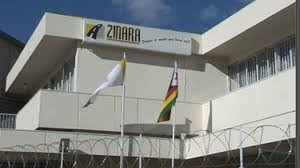
THE year 2017 has seen the city of Bulawayo being used as a political battlefield for opposition parties and the ruling Zanu PF with dismissals, suspensions, defections, resignations and even violence marking the new political culture.
BY SILAS NKALA
All manner of skirmishes unfolded involving Zanu PF, then led by Robert Mugabe, Morgan Tsvangirai’s MDC-T, Tendai Biti’s People’s Democratic Party, Dumiso Dabengwa’s Zapu and Joice Mujuru’s National People’s Party.
Bulawayo traditionally has no history of political violence and there are strong sentiments that the violence that was witnessed this year could have been imported from elsewhere.
#This Constitution activist, Abigale Mupambi, said parties often tailor-made their programmes to suit Matabeleland and that worked for a long time, but there was now a shift.
“The people of Matabeleland are fast opening their eyes and are beginning to speak out like never before. This is influencing change in different political platforms and parties,” she said.
Mupambi said most of the opposition parties preferred Bulawayo because of the community’s well known support for a change of government.
Chaotic scenes were witnessed on March 2 when hundreds of Zanu PF youths in Bulawayo, led by their district chairpersons, stormed the party’s provincial headquarters at Davis Hall demanding that five members of the youth provincial leadership be suspended on allegations of fanning factionalism.
- Chamisa under fire over US$120K donation
- Mavhunga puts DeMbare into Chibuku quarterfinals
- Pension funds bet on Cabora Bassa oilfields
- Councils defy govt fire tender directive
Keep Reading
The members targeted the party’s acting youth chairperson in the province, Anna Mokgohloa, acting secretary for administration, Leo Nyoni, secretary for commissariat Boniface Mutsure, secretary for transport, Maqhawe Sibanda and Dean Hlomai, who is in charge of production and labour.
They were accused of being aligned to the G40, a faction that was opposed to then Vice-President Emmerson Mnangagwa. During the protest Zanu PF youths demanded the named persons to vacate the party offices, accusing them of corruption and fanning tribalism.
They also targeted politburo member and Bulawayo Provincial Affairs minister Eunice Sandi Moyo, who was deputy to then First Lady Grace Mugabe in the Zanu PF women’s league, accusing her of fomenting a crisis in the youth league, corruption and abuse of food handouts.
On March 6, violence broke out at Davis Hall prompting the anti-riot police to be called in to quell the disturbances as the G40 and Lacoste factional groups fought tooth and nail over the control of the office and the party in Bulawayo.
Zanu PF’s provincial co-ordinating committee (PCC) which was believed to be composed of members aligned to the G40 faction was holding a meeting, which left out and blocked the Lacoste members, who claimed they deserved to attend.
There were running battles as the youth battered each other with stones and knobkerries before the meeting could start. Moyo was alleged to have hired thugs to manhandle anyone perceived to be her enemy. But she dismissed the claims and accused the Zanu PF youths of lacking respect.
Former Bulawayo Central district chairperson, Magura Charumbira, was stabbed on the head during the skirmishes while window panes were shattered at the offices.
The NPP was not spared either in the political disturbances that rocked Bulawayo, as 50 influential members resigned from the party on June 25, citing rampant tribalism, lack of transparency and democracy in the party.
The developments came a few days after several top executives in Matabeleland South province had also dumped Mujuru over similar allegations.
Steven Nkiwane, a former NPP constituency chairperson for Magwegwe in Bulawayo, said the party unilaterally dissolved local structures on tribal grounds.
“We had provincial elections that were held in April and the people elected were stripped of their positions. So there is no democracy in this party and, for now, we are pursuing other agendas,” he said.
“It is painful that the losers, who were not elected by people, are now office bearers.”
But NPP national spokesperson, Methuseli Moyo said the affected officials were rejected.
When the Zanu PF’s house was burning in Bulawayo, the main opposition party MDC-T was not spared, as violence erupted at the party offices on August 6 during a meeting which involved party’s vice president Thokozani Khupe, national organiser Abednico Bhebhe and national chairman Lovemore Moyo.
Fifteen youths who pounced at the offices and, declared themselves as the vanguard of the party reportedly came, all the way from Harare to disrupt the meeting.
They allegedly accused Khupe and her group of boycotting the MDC Alliance signing ceremony, which was held in Harare.
Office windows were shattered as the angry youth stoned the building. The main auditorium was littered with broken glass and blood, with stones all over the floor.
The aborted meeting, which was supposed to be attended by national and provincial executive committee members from Bulawayo, Matabeleland South and Matabeleland North, was meant to discuss the coalition agreement and way forward.
Khupe, Bhebhe and Moyo had previously openly opposed the alliance signing, accusing their leader Tsvangirai of imposing the party into the pact.
Tsvangirai had inked the pact with six other opposition leaders, who later endorsed him as their presidential candidate.
For many, the incident marked the end of MDC-T support in Bulawayo, unless Tsvangirai and Khuphe reconciled.
The view was that the third major split of the party was brewed on the day. MDC has so far split two times so far as the Welshman Ncube led party broke away in 2005 and the Tendai Biti-led PDP broke away in 2014.
However, Tsvangirai and Khupe have since reconciled rendering the split assumptions null.
Even small parties like Zapu, led by Dumiso Dabengwa, were not spared. On September 6, it was reported that Dabengwa and the party’s secretary-general, Strike Mnkandla, clashed over control of the secretariat and party organs, amid claims the latter was positioning himself to take over the presidency at the next congress in 2020.
Mnkandla was alleged to have “unilaterally tried to change the party secretariat” to influence his takeover bid and had, for a long time, been at loggerheads with a Zapu faction opposed to his ascension to the presidency.
Within three years after its formation, PDP experienced its second split on September 27 when members of the party opposed to the MDC Alliance signed by Biti with Tsvangirai and other parties gathered in Bulawayo where they declared that they have fired Biti.
The first split was when Elton Mangoma left the party at its early stages to form his Renewal Democrats Zimbabwe.
In the latest split PDP, secretary general Gorden Moyo led the meeting and the general council elected Lucia Matibenga president.
Since then, there have been two PDPs, the one in the MDC Alliance and the other one which signed a coalition with Mujuru’s NPP and other smaller parties to form the People’s Rainbow Coalition.
Biti and his faction also held a press conference in Harare where he announced some replacements of members in the Matibenga led faction.
The biggest political conflict that heralded political change was witnessed at White City Stadium on November 4 during the Zanu PF presidential youth interface rally, where former First Lady Grace Mugabe was booed by youth aligned to Mnangagwa while addressing the crowd.
The booing angered both Mugabe and his wife, prompting Grace to declare that Mnangagwa ascended to the Vice-Presidency position after the female Vice -President clause of the party’s constitution was amended to suit his promotion and women wanted the position back.
She also accused Mnangagwa of abusing office by wanting to have former Higher, Tertiary, Science and Technology Minister Jonathan Moyo arrested for abuse of Zimbabwe Manpower Development Fund money.
Mugabe told Mnangagwa to form his own party with those who support him and threatened to fire him the following day if party members said so.
Mugabe said he had been subjected to insults by Mnangagwa’s supporters, especially from Masvingo and Midlands provinces.
He said Mnangagwa’s supporters had been bused from outside Bulawayo to embarrass him and his wife.
The youth who booed Grace were arrested for undermining authority of the president.
Following the rants at White City, Grace addressed a Super Sunday rally organised with the members of the apostolic sect in Harare, which was meant to seal Mnangagwa’s fate. The following day Mugabe fired him.
That would culminate in a turn of events, which saw Mnangagwa being fired but then returning to take over power from Mugabe on November 24.
Ibhetshu Likazulu secretary general, Mbuso Fuzwayo said Bulawayo has always led in the politics of the country.
“People in Bulawayo, since the liberation struggle, have always been clear. The violence in MDC-T was done by outsiders against locals which is sad. In the booing of Grace, you will recall that in 2014, people walked out when she was addressing.
It is clear that politically, people know what they want. It’s unfortunate that economically it affects the growth of the city,” he said.
Crisis in Zimbabwe Coalition spokesperson, Dumisani Nkomo, said Bulawayo has always been the capital of opposition politics. “It is sad however, that lately it has been abused for dirty politics of hate and violence. This is unacceptable for a city of its cultural and historical stature,” he said.







